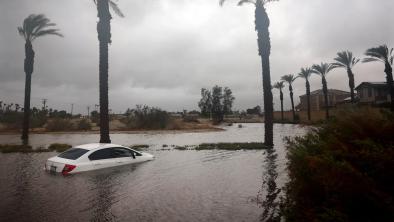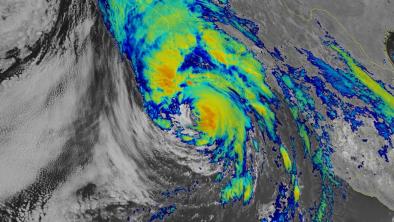Science Source
The effect of translation speed upon the intensity of tropical cyclones over the tropical ocean
- Uses 40 years of tropical cyclone track data to show that storm intensity correlates with translation speed, with hurricanes of category 5 moving on average 1 m s−1 faster than tropical storms
- This correlation provides evidence that the translation speed of a storm can exert a significant control on the intensity of storms by modulating the strength of the negative effect of the storm-induced sea surface temperature (SST) reduction on the storm intensification (i.e., the SST feedback): Faster-moving storms tend to generate weaker sea surface cooling and have shorter exposure to the cooling, both of which tend to weaken the negative SST feedback
- States, consistent with the above logic, that there exists a minimum translation speed for intensification and its value grows with TC intensity, resulting in a minimum translation speed for the existence of a TC in each intensity category
- A composite analysis of satellite-based SST measurements reveals that in the tropical region the average strength of the storm-induced sea surface cooling can be explained by the superposition of an effect due to the storm intensity and an effect associated with the translation speed, and implies that the variability of upper ocean stratification may not be an important factor in this region
- Results suggest that progress in the prediction of TC tracks, particularly in the translation speed of storms, should lead to improved storm intensity prediction
Related Content
Science Source
| Scientific Reports
Observed increases in North Atlantic tropical cyclone peak intensification rates
Andra J. Garner
Headline

Aug 22, 2023 | Climate Nexus Hot News
Hilary Breaks 'Virtually All Rainfall Daily Records'
Headline

Aug 22, 2023 | Climate Nexus Hot News
First SoCal Tropical Storm Since '39 Drops Years Worth Of Rain
Headline

Jun 14, 2023 | Climate Nexus Hot News
Heat Stifles Bangladesh Tea Pickers, India/Pakistan Prep For Cyclone


